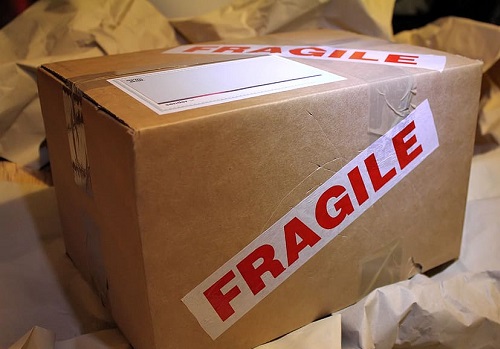Now more than ever, people are considering how the merchandise they purchase will impact the environment. As sustainability trends increase, companies will need to adapt their packaging or be left behind on the shelf. New initiatives, such as the New Plastics Economy Global Commitment, are uniting businesses, organizations and governments to target waste and pollution.
The first step toward building a green business is learning about sustainable matter.
What are some examples of environmentally friendly packing materials? Keep reading to find out!
Bioplastic
These are plastics made from natural, renewable feedstock. In comparison, traditional plastic materials are derived from fossil fuels.
Bioplastics are marked by a leaf symbol on their packaging. To be recognized under the USDA BioPreferred Program, at least 25% of the content must be biobased. The remaining content sources may contain fossil fuels, so long as they achieve the minimum guidelines.
Examples of biobased matter include cornstarch, sugarcane and algae. These products produce fewer greenhouse gases and are considered less toxic than conventional plastic.
Recycled Paper
Recycled goods are beneficial for the environment because they can reduce garbage. Paper products break down at a faster rate than plastic and can act as a more sustainable choice for wrapping.
Choosing recycled paper will ensure the material serves an extended life before ultimately entering a landfill.
Wax is often applied to paper goods to make them durable and moisture resistant. Some wax-coated papers, such as baking parchment, are also heat resistant. The modified wax stops the paper products from disintegrating when they come into contact with substances like water. As a result, these coated paper wrappings can be a resilient and sturdy option for packaging.
Organic Fabric
Recycled cotton bags are just one example of how organic fabric is used for packaging. For a material to be considered organic, it must have originated from living matter. Therefore, synthetic fibers do not qualify.
Organic fabric can act as a filler inside boxes, or even a wrap for merchandise, like jewelry. The beauty is that organic textiles like cotton biodegrade much faster than their synthetic counterparts. An item made out of cotton biodegrades within six months, but it takes standard plastic at least 500 years to decompose.
Compostable Plastic
Compostable materials break down at composting facilities under the proper conditions. However, when these items are discarded on the road or in dumpsites, they do not decompose as intended.
Compostable bags can disintegrate completely, which means they are less likely to be ingested by animals. These items are typically marked by a composting symbol. This way, consumers know to send the trash directly to an industrial or commercial composting facility rather than including it in the recycling bin.
Bamboo
Bamboo is a group of perennial evergreens considered to be one of the fastest-growing plants on the planet. With significant growth each day, bamboo can make an extremely sustainable choice for packing products.
It is an eco-friendly alternative to metal, plastic, wood or paper products. As a renewable resource, bamboo will be readily available compared to other materials. It can be woven or used as sheets, which increases its functionality.
Ocean-Bound Plastic
As the name suggests, goods made from this material come from plastic litter bound for the ocean. These items are collected from coastal areas and waterways and then transformed into new products.
Ocean-bound plastic has a positive effect on reducing litter and water pollution. It can create new merchandise or act as eco-friendly wrapping. Many companies will sell recycled ocean-bound plastics to other organizations looking to make a green change.
Benefits of Eco-Friendly Packaging
Sustainable packaging is great for the environment and beneficial to your business.
Most of these materials are lightweight, which means lower shipping costs. Additionally, you reduce your business’s carbon footprint through emissions reductions. Green measures highlight your commitment to the Earth’s health, which makes your company more respectable and honest in consumers’ eyes.
With so many outstanding benefits, the only question is, when will you make the change?
Emily Folk is a freelance writer, covering conservation and sustainability. You can read her blog, Conservation Folks, for more of her work.


